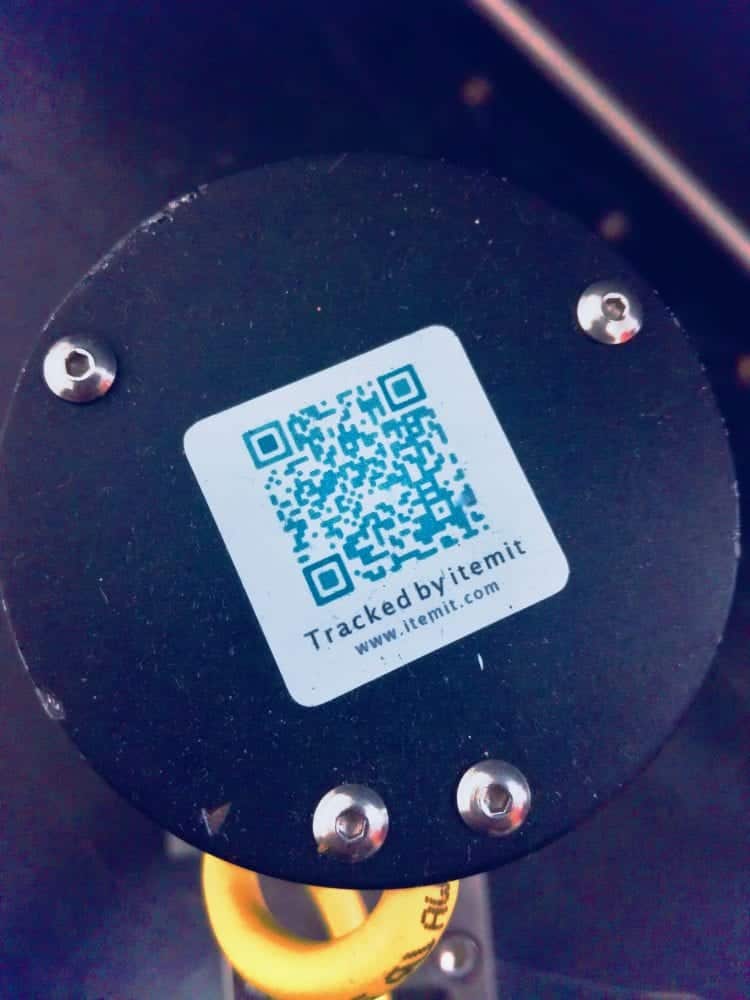Want to have more control over your fixed assets? find out from an expert why using a fixed asset register can make all the difference!
Why QR Codes are like Snowflakes

QR codes, or “Quick Response codes”, are the snowflake of the digital world. Not only because they look beautiful and have many uses, but also because of the number of variations possible. Originating in Japan for the asset management of car parts, QR codes have grown and become more popular. Now you’ll see QR asset tags everywhere, whether it’s one hanging off a street lamp, on a business card, or all over social media. You may even see one on your coffee mug while you’re waking up with that morning cup.
Everyone is still finding new, interesting, and creative ways to use the QR code. The possibilities are endless, but this creates a lot of questions. Are we ever going to run out of QR codes? Are QR codes just a trend? How do QR codes work? This blog will talk about all of this, and more.
How QR Codes Work
QR codes work in a similar way to barcodes. Barcodes use black and white lines. The pattern of black and white lines creates a series of numbers, each digit between 0 and 9, which on a computer can be transformed into useful information. A barcode scanner, whether it’s a laser or LED, absorbs the colour black and reflects the colour white, which is how the pattern of lines can be turned into a sequence of numbers.
How is this related to QR codes? The answer is quite simple: QR codes are the next logical step after the traditional barcodes. Imagine barcodes originally are one dimensional as they use lines in order to store information. In this case, QR codes are two dimensional as they use black and white dots (modules) instead, with informations stored across two dimensions. The use of white and black is the same as it shows the reader, which can now be any smartphone, what the stored information is. Therefore, instead of using a combination of numbers between 0 and 9, QR codes can store a lot more information – hundreds of times more, in fact!
So, what are those big squares in the corners? These act as alignment targets. This way, the information can still be read from any angle. The problem with barcodes is that there is a limit to the amount of information they can give due to their one-dimensional nature. QR codes, on the other hand, can be read horizontally and vertically, thanks to how they align with a scanner.
Uses
Where to begin? QR codes are being used in so many different ways today that it’s probably difficult to cast your mind back and think of the last time you saw one. Advertising, social media accounts, business management, asset tracking, cereal boxes, rooftops, videos, coupons, contact information, people have even got QR code tattoos! So, why do they have so many uses? And how do people think of new ways to use QR codes?
The answer is simple: they make life so much easier. They’re cheap and easy to use, and just like snowflakes, they seem to be falling out of the sky at an ever-increasing rate. Instead of creating information that has to be looked through and repeated, all you need is a phone or a scanner and it does everything for you. Instead of writing out a number or code and expecting people to copy it and maintain it, all they need to do is scan the code and in a matter of seconds, they can be wherever they need to be. Instead of typing out an inventory and still risking losing items or spending a while wondering where you last put something, QR codes can keep track of anything and everything, showing a last known location. All you need to do is stick a QR tag on an item, and then that item is transformed into something infinitely more useful.
So, to go into specific uses would take forever as each new individual QR code has a new individual use. Every snowflake is different, just like every QR code. Because of this, human imagination is the limit, and just like QR codes, this is endless. Generally, however, QR codes are used to make people’s lives easier. Instead of having to search and research and discover, QR codes make a connection to information instantaneous. All you need is a phone and an inquisitive mind.
Variations
Not only does the standard QR code type have a variety of models, there are even more types on top of this! You can duplicate any single QR code to create wider access to the same information, but the different types of QR code allow for a greater flexibility of look and usage. The different types can be used for a range of individual purposes, or it can even depend simply on how much information needs to be stored.
Standard
The first type is the standard type, the original, the grandfather of QR. There are 40 different models of this, starting with Model 1, which has the least information and can store up to 1,167 numerals. They get continuously larger, up to Model 40 which can store up to 7,089 numerals.
Micro
A smaller, more adorable version of the above, this QR code only has one alignment target meaning that less information is stored on it, but that it can be used in more places.
IQR Code
IQR codes can store more information as their modules can be either square or rectangular. In theory, the maximum version can store around 40,000 numerals!
SQRC
This QR code can restrict reading for security purposes. Other than the fact that it can be used to store private information, it looks no different to a standard QR code.
Frame QR
You’ve probably seen these around a lot as well. These QR codes have a “canvas area” that is left blank. The information surrounds it, but anything that fits, including a company name or a picture, can be put inside the canvas area.
The Future of QR Codes
Where to now, then? What is the future of QR codes? The answer is quite simple. QR codes will continue to grow and there will continue to be more and more uses for them.
There is a logical thought progression, however. If barcodes use one dimension, and QR codes use two, is it possible to make something that stores and makes readable information in three dimensions? The answer is that since every QR code can be unique and that the possibilities are still endless, then what would be the purpose? At this point in human history, QR codes store more than enough information, whether it’s simply a web URL or if it’s more complicated, like who’s in control of all of your personal assets.
QR codes, therefore, are like a blizzard. Millions of unique items creating a larger connectivity in the world, building up into something beautiful. QR codes not only connect us to each other, but they connect us to our machines and our technologies a lot more. They make our lives that little bit easier and that little bit quicker, but they also give character to objects. So, if you do choose to place a QR tag on your mug, it’s no longer just a mug. Now, it’s a library, and with itemit, it’s a library that everyone can connect to, making everyone’s lives a lot easier.
See our unique QR snowflakes for yourself!
Start your free 14-day trial now
Instant access. No credit card details required.








